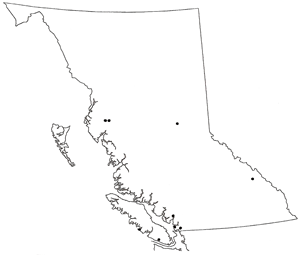This is an introduced European species of earthworm. Reynolds (1977) provides the following description for it: “Length 17-60, diameter 3-5 mm, segment number 60-100, prostomium epilobic, first dorsal pore 4/5-6/7. Clitellum xxvii, xxviii, xxix-xxxiii, xxxiv. Tubercula pubertatis usually on xxxi-xxxiii. Setae widely spread, AA=BB=CD and DD is slightly greater. On xvi setae a or b are found on small genital tumescences. Male pores on xv surrounded by small, often indistinct, glandular papillae. Seminal vesicles in 9, 11, and 12. Spermathecae, three pairs with long ducts on level with setae d opening in 9/10-11/12. Body cylindrical, with posterior portion octagonal. Colour, red, dark red to purple.”
Source: Reynolds, John W. 1977. The Earthworms (Lumbricidae and Sparganophilidae) of Ontario. Life Science Miscellaneous Publications, Royal Ontario Musuem, Toronto, with permission.
Dendrobaena octaedra (Savigny, 1826)
Earthworm; Octagonal-Tail Worm
Family: Lumbricidae
Earthworm; Octagonal-Tail Worm
Family: Lumbricidae
Map

Distribution of Dendrobaena octaedra in British Columbia.
(Click on the map to view a larger version.)
Source: Marshall and Fender (2007)
Introduction
|
Illustration
Click on the image(s) below to view an expanded illustration for this taxon.

Illustration Source: Reynolds, John W. 1977. The Earthworms (Lumbricidae and Sparganophilidae) of Ontario. Life Science Miscellaneous Publications, Royal Ontario Museum, Toronto.
Species Information
Biology
|
Habitat
|
Distribution
|
Status Information
BC Ministry of Environment: BC Species and Ecosystems Explorer--the authoritative source for conservation information in British Columbia. |